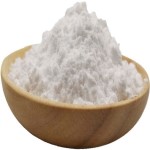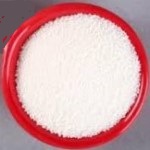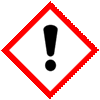CAS Number 156-54-7, Sodium Butyrate USP & Coated, Encapsulated Sodium Butyrate Grade Manufacturers Exporters








CAS Number 156-54-7, Sodium Butyrate Manufacturer Exporter
CAS Number NA, Coated, Encapsulated Sodium Butyrate Manufacturer Exporter
For Properties Specifications of Sodium Butyrate USP & Coated, Encapsulated Sodium Butyrate Click Properties, Specifications of Sodium Butyrate USP & Coated, Encapsulated Sodium Butyrate Manufacturer.
For Uses of Sodium Butyrate & Encapsulated Sodium Butyrate Click Uses of Sodium Butyrate & Encapsulated Sodium Butyrate Manufacturer.
For For SDS MSDS Sheet of Sodium Butyrate & Encapsulated Sodium Butyrate Click SDS Safety Data Sheet MSDS Sheet of Sodium Butyrate & Encapsulated Sodium Butyrate Manufacturer.
The Properties and Specifications of Sodium Butyrate & Encapsulated Sodium Butyrate:
Sodium Butyrate USP Grade Specifications
C4H7NaO2 -- 110.10
Butyric acid, sodium salt.
CAS 156-54-7
Sodium Butyrate contains not less than 98.0 percent and not more than 101.0 percent of C4H7NaO2, calculated on the anhydrous basis.
Identification:
A: Infrared Absorption on the undried specimen.
B: A solution (1 in 10) meets the requirements of the tests for Sodium..
Alkalinity: Dissolve 2.0 g in 20 mL of water, and add 1 drop of phph TS: if a pink color is produced, it is discharged by 0.50 mL of 0.10 N sulfuric acid.
Water: not more than 1.0%.
Heavy metals: 0.001%..
We also supply Sodium butyrate coated with hydrogenated vegetable oil, or Encapsulated Sodium butyrate.
The Uses of Sodium Butyrate & Encapsulated Sodium Butyrate:
The butyrate ion, along with the analogous propionate ion, is purported to enhance gut health in humans and many other animal species. At the intestinal level, butyrate exerts multiple effects such as the prevention and inhibition of colonic carcinogenesis. In one study, researchers found that sodium butyrate blocked the growth of colorectal cancer cells.
The MSDS-SDS Hazard Statement of Sodium Butyrate & Encapsulated Sodium Butyrate:
Sodium Butyrate SDS Safety Data Sheet
MSDS Sheet, Material Safety Data Sheet 24-Jan-23
1. Product Identification
Product Name & Other Names: Sodium butyrate; Sodium butanoate; Butyric acid sodium salt.
CAS No.: 156-54-7
EINECS EC Number: 205-857-6
Molecular Weight: 110.09
Chemical Formula: CH3CH2CH2COOHNa
Relevant uses and uses advised against (if any): Industrial Manufacturing.
Suppliers: As per letterhead.
2. Hazards Identification
GHS, Globally Harmonized System Classification in accordance with 29 CFR 1910
Classification according to Regulation (EC) No 1272/2008
Skin corrosion/irritation Category 2, H315
Serious eye damage/eye irritation Category 2A, H319
Specific target organ toxicity, single exposure; Respiratory tract irritation Category 3, H335
Germ cell mutagenicity Category 2, H341
Labeling according to GHS & Regulation (EC) No 1272/2008
GHS Label Elements  Health Hazard |
GHS Label Elements |
Signal Word: Warning
Hazard statements:
H315 Causes skin irritation.
H319 Causes serious eye irritation.
H335 May cause respiratory irritation.
H341 Suspected of causing genetic defects.
Precautionary statements:
P202: Do not handle until all safety precautions have been read and understood.
P261: Avoid breathing dust/fume/gas/mist/vapors/spray.
P264: Wash … thoroughly after handling.
P280: Wear protective gloves/protective clothing/eye protection/face protection.
P281: Use personal protective equipment as required.
P302+P352: IF ON SKIN: Wash with plenty of soap and water.
P303+P361+P353: IF ON SKIN (or hair): Remove/Take off immediately all contaminated clothing. Rinse skin with water/shower.
P332+313: If skin irritation occurs: Get medical advice/attention.
P304+P340: IF INHALED: Remove victim to fresh air and keep at rest in a position comfortable for breathing.
P305+P351+P338: IF IN EYES: Rinse cautiously with water for several minutes. Remove contact lenses, if present and easy to do. Continue rinsing.
P308+313: IF exposed or concerned: Get medical advice/attention.
P337+313: If eye irritation persists get medical advice/attention.
3. Composition/Information on Ingredients
Product Name & Other Names: Sodium butyrate; Sodium butanoate; Butyric acid sodium salt.
CAS No.: 156-54-7
EINECS EC Number: 205-857-6
4. First Aid Measures
Always seek medical attention after first aid measures are provided.
Inhalation: If Sodium Butyrate is inhaled, remove to fresh air. If breathing is difficult, give oxygen. Get medical attention.
Ingestion: Give large amounts of water to drink. Never give anything by mouth to an unconscious person. Get medical attention.
Skin Contact: In case of contact, immediately flush skin with plenty of water. Cover the irritated skin with an emollient. Remove contaminated clothing and shoes. Cold water may be used. Wash clothing & Shoes before reuse. Get medical attention.
Eye Contact: Check for and remove any contact lenses. In case of contact, immediately flush eyes with plenty of water for at least 15 minutes. Cold water may be used. Get medical attention.
5. Fire Fighting Measures
Fire: Not expected to be a fire hazard. However, it can burn at higher temperature.
Explosion: No information found.
Fire Extinguishing Media: Use any means suitable for extinguishing surrounding fire.
Special Information: In the event of a fire, wear full protective clothing and NIOSH-approved self-contained breathing apparatus with full face piece operated in the pressure demand or other positive pressure mode. At high temperatures under fire conditions, it may produce toxic or irritating fumes. Fire-extinguishing work is done from the windward and the suitable fire-extinguishing method according to the surrounding situation is used.
6. Accidental Release Measures
Personal precautions, protective equipment, and emergency procedures: Ventilate area of leak or spill. Avoid breathing dust/fumes/gas/mist/vapors/spray. Use individual protective equipment (waterproof boots, suitable protective clothing, safety glasses, etc.). Do not approach facing the wind.
Environmental precautions: Do not let the product enter drains, soil, or water sources.
Methods and materials used for containment Cleanup procedures and Storage: Contain spilled material. Cover with an inert, non-combustible absorbent material, (e.g. sand, earth, diatomaceous earth, vermiculite). Use a shovel to put the material into a convenient waste disposal container. Finish cleaning by spreading water.
7. Handling and Storage
Precautions for safe handling: Apply according to good manufacturing and industrial hygiene practices. Ensure proper ventilation. Wash thoroughly after handling. Do not drink, eat, or smoke while handling. Avoid contact with skin, eyes, and clothing. Minimize dust generation. Avoid breathing dust/fumes/gas/mist/vapors/spray. Keep container tightly closed. Avoid ingestion and inhalation. Use individual protective equipment (waterproof boots, suitable protective clothing, safety glasses, etc.).
Conditions for safe storage, including any incompatibilities: Store in cool, dry, and ventilated area away from heat sources and protected from sunlight in tightly closed original container. Keep air contact to a minimum. Store protected from heat, sparks and ignition sources and incompatible materials. Avoid contact with skin and eyes. Avoid inhalation of dust/mist/vapor. Do not store with incompatible materials like strong oxidizing agents and strong acids and strong oxidizing agents.
8. Exposure Controls/Personal Protection
Airborne Exposure Limits: None established.
Ventilation System: A system of local and/or general exhaust is recommended to keep employee exposures as low as possible.
Personal Respirators (NIOSH Approved): For conditions of use where exposure to the substance is apparent, consult an industrial hygienist.
Skin Protection: Wear impervious protective clothing, including boots, gloves, lab coat, apron or coveralls, as appropriate, to prevent skin contact.
Eye Protection: Use chemical safety goggles and/or a full face shield where splashing is possible. Maintain eye wash fountain and quick-drench facilities in work area.
Other Control Measures: Maintain good housekeeping in work area. Handle in accordance with good industrial hygiene and safety practice.
9. Physical and Chemical Properties
Appearance: White to off-white powder.
Odor: Light odor.
Odor threshold: Not available.
pH: Not available.
Relative density: around 0.96
Melting point/freezing point: Not available.
Initial boiling point and boiling range: Not available.
Flash point: Not available.
Auto-ignition temperature: Not available.
Decomposition temperature: Not available.
Upper/lower flammability or explosive limits: Not available.
Vapor pressure: Not available.
Vapor density: Not available.
Evaporation rate: Not available.
Flammability (solid, gas): Not available.
Partition coefficient: n-octanol/water: Not available.
Solubility: Appreciable solubility in water.
Viscosity: Not available.
10. Stability and Reactivity
Stability: Stable under ordinary conditions of use and storage.
Hazardous Decomposition Products: Carbon dioxide and carbon monoxide may form when heated to decomposition. Toxic fumes of the contained metal may be released when heated to decomposition.
Hazardous Polymerization: Will not occur.
Incompatibilities: Strong acids and strong oxidizing agents.
Conditions to Avoid: Incompatibles.
11. Toxicological Information
Toxicity to Animals: Not available.
Carcinogenic Effects: Not a reported carcinogen by IARC NTP ACGIH OSHA.
Mutagenic Effects: Classified POSSIBLE for human.
Teratogenic Effects: Not available.
Developmental Toxicity: Not available.
12. Ecological Information
Toxicity to fish: LC50 - Lepomis macrochirus - 5.000 mg/l - 24 h
Toxicity to daphnia & other aquatic invertebrates: EC50 - Daphnia magna (Water flea) - 1.950 mg/l - 24 h
Results of PBT and vPvB assessment: This substance/mixture contains no components considered to be either persistent, bioaccumulative and toxic (PBT), or very persistent and very bioaccumulative (vPvB) at levels of 0.1% or higher.
13. Disposal Considerations
Whatever cannot be saved for recovery or recycling should be managed in an appropriate and approved waste disposal facility.
14. Transport Information
DOT USA, TDG Canada & ADR/RID Europe: Not controlled.
IMDG/IMO: Not controlled.
IATA/ICAO: Not controlled.
15. Regulatory Information
USA:
SARA 311/312: See section 2.
Section 16 - Additional Information
DISCLAIMER: The information and recommendations set forth herein are presented in good faith and believed correct as of the date hereof. It is compiled from various sources and it is not necessarily all inclusive nor fully adequate in every circumstance. In addition, these suggestions should not be confused with nor followed in violation of applicable laws, regulations, rules or insurance requirements applicable. This MSDS sheet is intended only as a guide to the appropriate precautionary handling of the material by a properly trained person using this product. Individuals receiving the information must exercise their independent judgment in determining its appropriateness for a particular purpose.
Anmol Chemicals & Pharmaceuticals Pvt. Ltd. is an off-shoot of Anmol Chemicals Taloja. It is located in MIDC Taloja and it is manufacturing pharmaceutical grades of API, Excepients, Food grade and Reagent grade chemicals. Anmol Chemicals & Pharmaceuticals Pvt. Ltd. is a several decades old group of companies, engaged in manufacturing, supplying, distributing, wholesale supplies for actual users, retail or small pack supplies for research and development chemicals, fine and speciality chemicals, pharmaceutical excipients, mineral fortifiers in chemically pure, Analytical reagent grade, IP BP USP Ph Eur EP JP and other pharmaceutical grade monograph including FCC Food grade chemicals and Nutraceuticals, Mineral Fortifiers at best prices.

Sodium Butyrate Structure
CAS Number 156-54-7, Sodium Butyrate & Coated, Encapsulated Sodium Butyrate Manufacturer Exporter
ANMOL CHEMICALS & PHARMACEUTICALS Pvt. Ltd.
India, USA, Europe, UAE
TELEPHONE: +912223770100
Navi Mumbai, INDIA
e-mail: info(At the rate i.e. @)anmol.org
Copyright. 24-nov-24
We manufacture:
Glacial Acetic Acid Manufacturer
Calcium Saccharate Supplier

